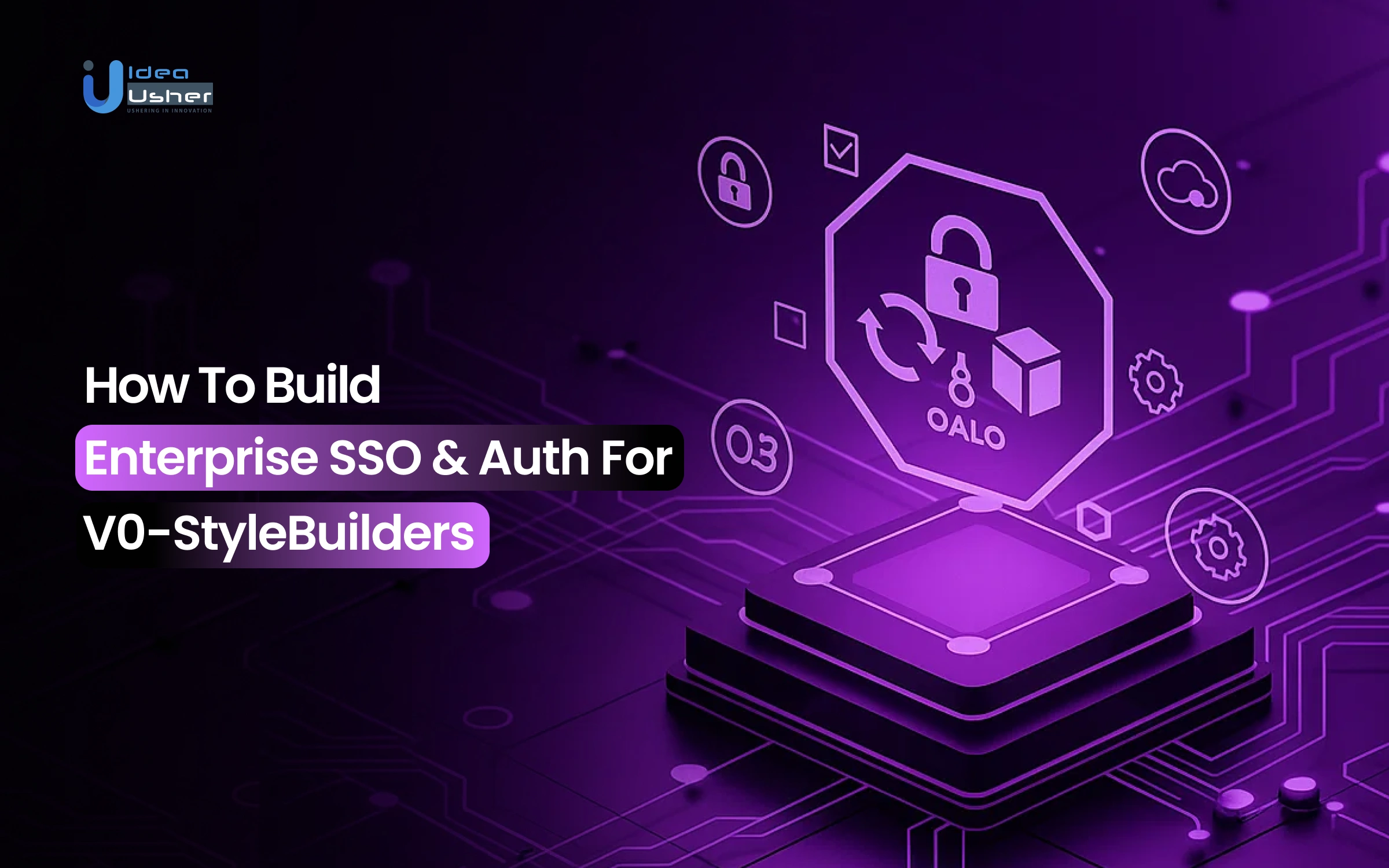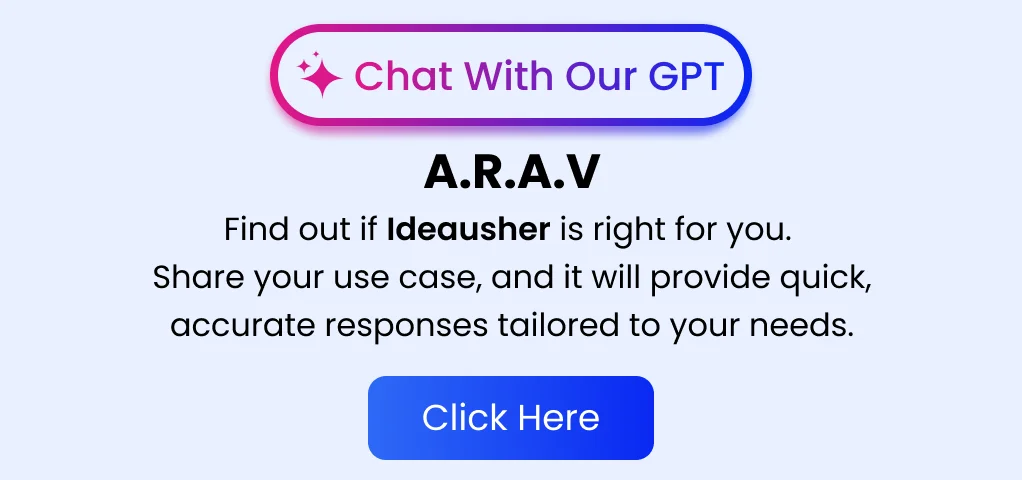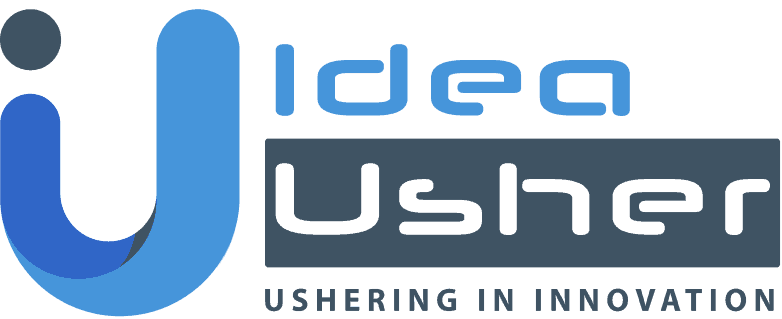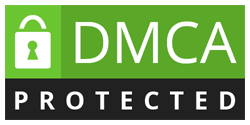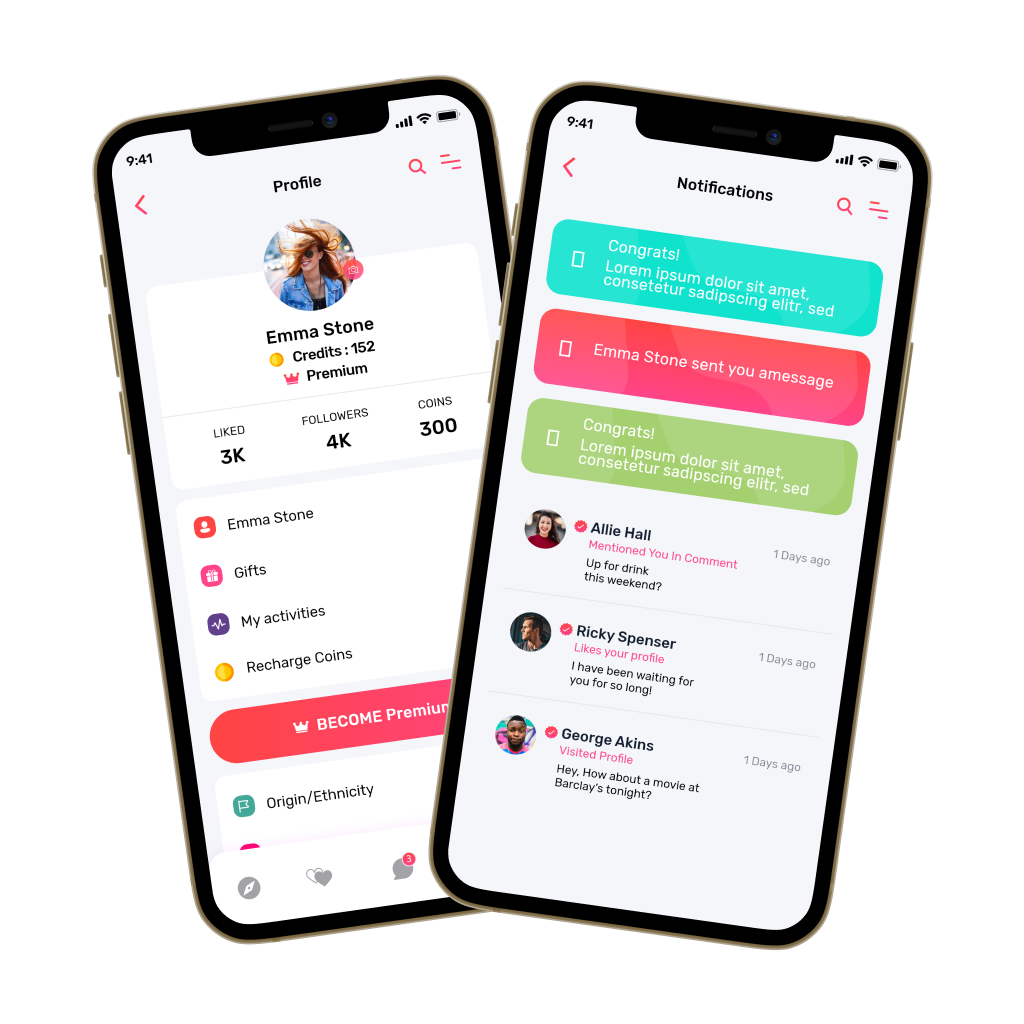Speed and scalability define modern product development process but things often get complicated when it comes to security. Enterprise SSO & auth remain critical for protecting users and data, but implementing them can overwhelm even experienced builders. Especially for v0-style teams, who thrive on speed, finding a way to blend ease and security is the real challenge.
As more teams adopt v0-style or no-code workflows, the need for plug-and-play security grows. Developers no longer want to spend weeks setting up login systems or managing tokens as they want secure foundations that integrate effortlessly. Modern SSO and authentication frameworks now make it possible to connect users, apps, and data in minutes while maintaining enterprise-grade reliability.
In this blog, we’ll break down how to build an enterprise-grade SSO and authentication system specifically tailored for v0-style builders. You’ll learn the key steps, tools, and best practices to implement it right, making your app secure, efficient, and ready for enterprise-level scale.
IdeaUsher applies its expertise in enterprise security solutions to help organizations develop SSO and authentication systems that are robust, scalable, and deliver tangible value for users.
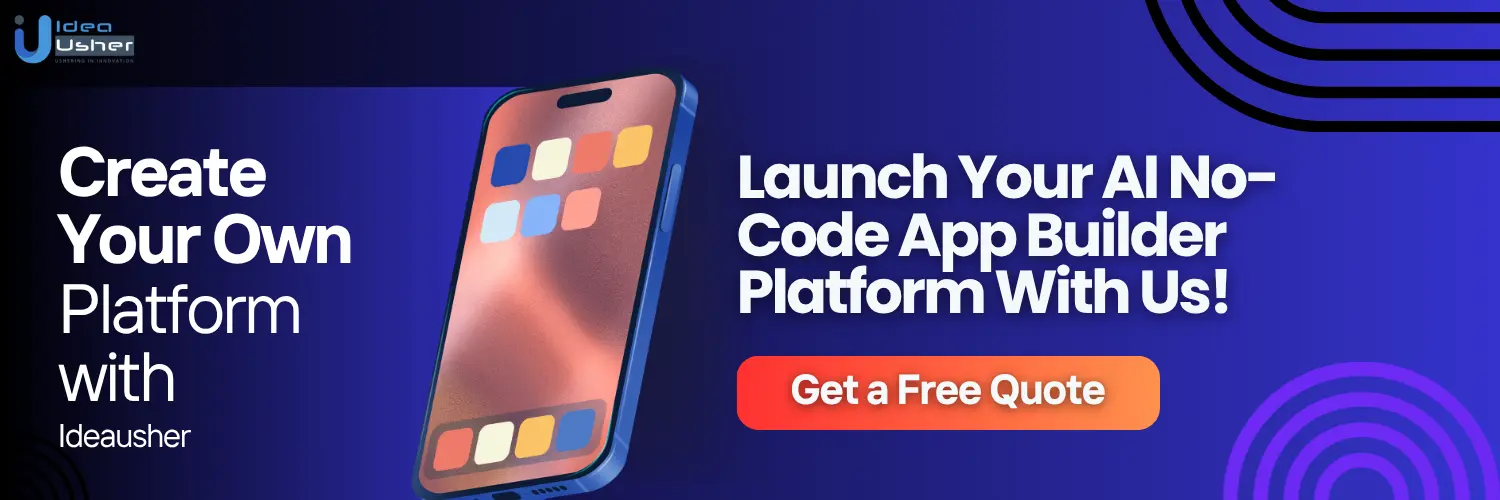
What is SSO (Single Sign-On)?
Single Sign-On (SSO) is an authentication process that allows users to access multiple applications or systems using a single set of login credentials. Instead of remembering different usernames and passwords for each platform, users log in once and gain access to all connected systems without re-entering credentials.
This streamlines workflows, reduces login friction, and enhances security, making it a crucial element in modern enterprise identity management.
How Enterprise SSO Works?
Enterprise Single Sign-On (SSO) works like a centralized gateway that verifies a user’s identity once and then grants access to all authorized applications without repeated logins. This process relies on secure authentication protocols and token-based identity verification. Here’s a step-by-step breakdown of how it actually works:
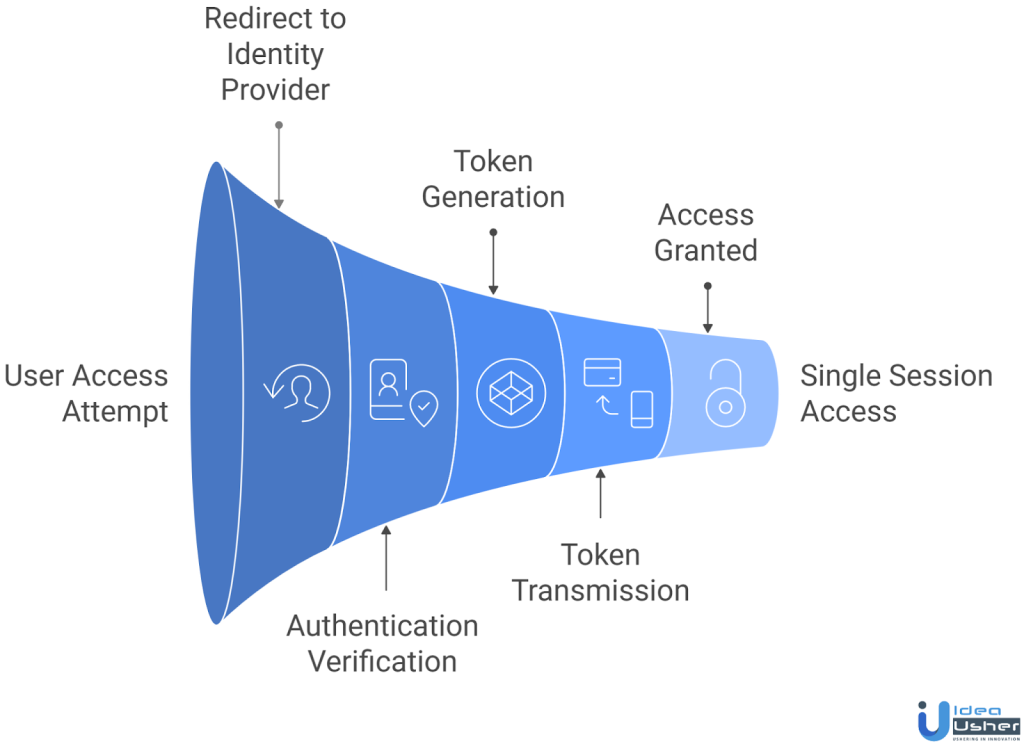
1. User Login at Identity Provider
The process starts when a user tries to access an enterprise app and is redirected to a centralized Identity Provider (IdP) like Okta, Azure AD, or Google Workspace, which handles authentication.
2. Authentication Verification
The IdP verifies the credentials through secure methods like passwords, multi-factor authentication (MFA), biometrics, or smart cards. Once verified, the IdP generates an authentication token containing the user’s identity information and permissions.
3. Token Transmission to Applications
This authentication token is securely passed to the requested application using protocols such as SAML, OAuth 2.0, or OpenID Connect. These protocols ensure that authentication data is transmitted safely without exposing credentials.
4. Access Granted
The application validates the token and grants access based on the user’s role and permissions. The user can now seamlessly access the app without re-entering credentials.
5. Single Session for Multiple Applications
Once authenticated, the token can be reused to access other integrated applications without additional logins. This smooth process is powered by both authentication (verifying identity) and authorization (granting appropriate access), ensuring secure, seamless entry across the enterprise environment.
What is Auth (Authentication & Authorization)?
Authentication and authorization, often called Auth, are the two main elements that enable secure access in enterprise systems. Since we have already discussed them in the context of SSO, let’s take a closer look at each one.
- Authentication is the process of verifying identity. It answers the question: “Who are you?” Methods include passwords, biometric scans, security tokens, or multi-factor authentication (MFA).
- Authorization determines permissions. It answers: “What can you do?” Once identity is confirmed, authorization decides which resources, apps, or data the user can access and at what level.
Authentication and authorization work together as the foundation of secure and efficient access control. With enterprise SSO, this means logging in is simpler while systems stay safe and compliant.
Basic Login Systems vs. Enterprise Identity Management
Basic login systems use simple usernames and passwords, which work well for smaller applications but may not offer strong security or room to grow. In contrast, enterprise identity management lets organizations manage user access securely and efficiently in one place.
| Aspect | Basic Login System | Enterprise Identity Management |
| Credential Storage | Each app stores its own usernames and passwords | Centralized identity provider manages credentials |
| Login Experience | Users must log in separately to each app | Users log in once to access multiple apps |
| Standards Used | Often proprietary or session cookie–based | Uses open standards (SAML, OAuth 2.0, OpenID Connect, JWT) |
| Security | Passwords stored in multiple systems increase risk | Centralized security policies, MFA, conditional access |
| User Provisioning | Manual user creation per app | Automated provisioning via identity directory |
| Audit & Compliance | Hard to track across systems | Centralized logs and access governance |

The Reason Behind the Boom of the AI No-Code Platform
The no-code AI platform market grew from USD 3.83 billion in 2023 and is expected to reach USD 24.42 billion by 2030, with a CAGR of 30.6% from 2024 to 2030. This growth is fueled by demand for faster, cost-effective application development without deep technical skills.

Lovable, a Swedish AI startup, has drawn major investment. The company raised €6.8 million and $16 million in seed rounds, plus $15 million in pre-Series A funding. This helped Lovable reach $17 million in annual recurring revenue and gain over 30,000 paying customers. In its Series A, Lovable secured $200 million from Accel, which brought its valuation to $1.8 billion and gave it unicorn status in Europe.
Wix acquired its no-code development platform Base44 for $84 million, aiming to enhance its AI-driven website building capabilities and provide users with more advanced automation and customization options.
Why Anyone Should Invest in an AI No-Code Platform?
Here’s why businesses are interested in AI no-code platforms, summarized in bullet points:
- Massive Market Demand: Businesses want AI capabilities without needing technical expertise or coding skills.
- Democratization of AI: Enables non-developers to build and deploy AI solutions, expanding the user base beyond data scientists.
- Faster Time-to-Market: Reduces development cycles, helping companies launch products and automate processes quickly.
- Cost Efficiency: Lowers the cost of hiring specialized AI engineers and reduces development overhead.
- Scalability: Platforms can easily scale across industries — from marketing automation to healthcare and finance.
- Integration with Enterprise Systems: Seamlessly connects with existing business tools (e.g., CRM, ERP, analytics), increasing adoption potential
- High ROI for Businesses: Simplifies automation and decision-making, boosting productivity and profitability.
- Attractive Acquisition Targets: Larger tech companies often acquire innovative no-code platforms to expand their AI ecosystems.
AI no-code platforms such as Lovable, Wix, and Bubble are quickly changing how software is developed. Thanks to solid funding and new features, these tools help people build applications more quickly, easily, and affordably. This shift is opening up new opportunities for innovation in many industries.
Why Enterprise SSO & Auth Matters for v0-Style Builders?
For v0-style builders, making user access simple is more than just a convenience. It is a key part of scaling your product safely. Enterprise Auth SSO and strong authentication help new users get started quickly and keep sensitive data protected from the very beginning.
1. Accelerating Product Adoption Through Seamless Access
Early-stage platforms face onboarding friction that can deter users. Enterprise SSO via providers like Google Workspace, Microsoft Azure AD, or Okta simplifies access, reducing password fatigue and confusion. This boosts adoption, lowers support needs, and creates a strong first impression, vital for v0 traction.
2. Future-Proofing with Scalable Identity Infrastructure
Early-stage products often grow more complex. Without a solid Auth setup, scaling becomes difficult. Enterprise Auth solutions enable your identity management to grow with your product, making integrations, multi-platform support, and secure API connections easier without costly rewrites. This reduces technical debt and supports smooth growth.
3. Strengthening Security Posture from Day One
Security should be integrated from the start. Enterprise SSO offers centralized access, while protocols like OAuth2, OpenID Connect, and SAML ensure consistent authentication. This reduces attack risk, prevents credential leaks, and aligns your product with security standards from day one.
4. Enabling Cross-Tool Productivity for Enterprises
Enterprise customers want tools compatible with their existing systems. SSO integrates your v0 product into company workflows, boosting productivity. Adding this early gives your product an edge, making it part of the enterprise process instead of just another tool.
5. Building Trust Through Compliance and Transparency
Modern enterprises need to comply with strict regulations like GDPR, HIPAA, or SOC2. Adding enterprise-grade Auth at the v0 stage shows your product can be trusted. Clear authentication processes show you take security, privacy, and compliance seriously, which is important for enterprise adoption.
6. Reducing Long-Term Development Overhead
Adding SSO and Auth late in development often means revisiting foundational architecture. For v0 builders, integrating these systems early avoids costly refactoring. It allows teams to build features around a consistent identity layer, saving significant time, resources, and developer effort in the long run.
The Impact of SSO on v0-Style Builders
For v0-style builders, implementing SSO can dramatically improve workflow efficiency and user experience. It reduces friction in access management while enhancing security across the platform from the very start.
| Aspect | Without SSO | With SSO |
| User Experience | Multiple credentials, friction in onboarding | Single access point, seamless onboarding |
| Adoption Rate | Lower due to friction and complexity | Higher through ease of access and familiarity |
| Security | Decentralized controls, higher breach risk | Centralized controls, reduced attack surfaces |
| Integration | Complex, costly integrations later | Smooth, enterprise-ready integrations from the start |
| Compliance | Harder to enforce and prove | Easier compliance with enterprise security standards |
| Technical Debt | High — rework needed to add SSO later | Low — secure identity layer from day one |
Core Components of Enterprise SSO & Auth Architecture
Enterprise auth development needs a well-designed architecture balancing security, scalability, and user experience. For v0-style builders, understanding these early ensures a strong growth foundation. Below are the critical building blocks of a robust Enterprise SSO & Auth system.
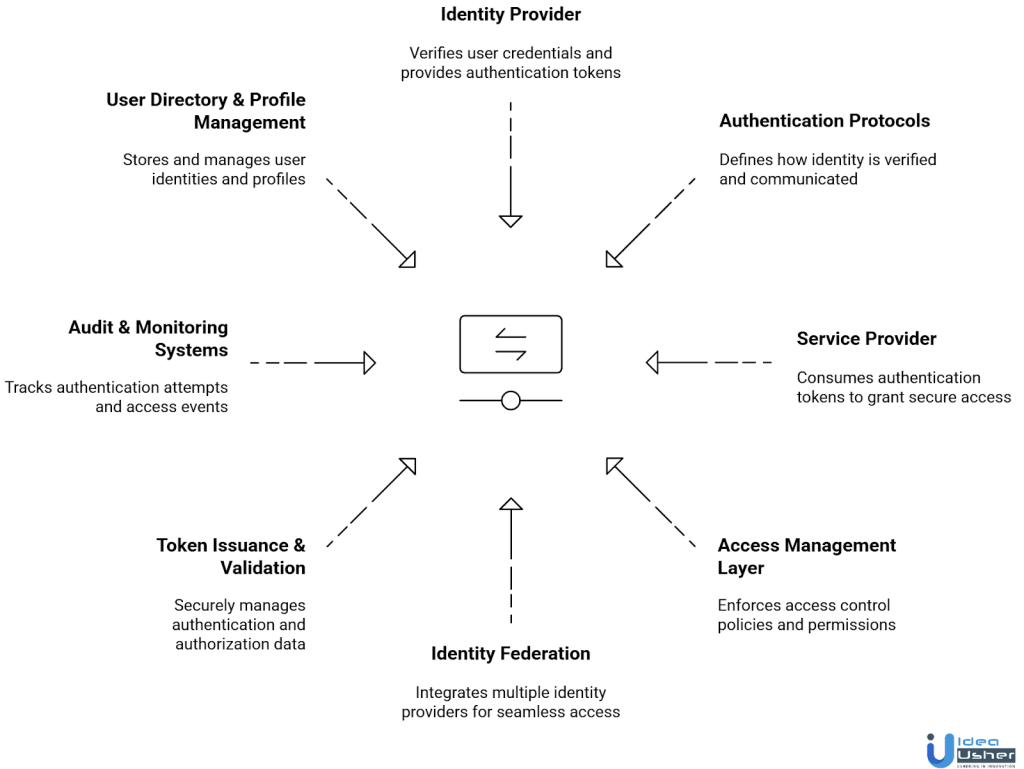
1. Identity Provider (IdP)
The Identity Provider is the central authority that verifies user credentials and provides authentication tokens. Examples include Okta, Azure Active Directory, Google Workspace, and Auth0. For v0 builders, integrating a reliable IdP early can significantly reduce development overhead while ensuring compliance and enterprise trust.
2. Authentication Protocols
Authentication protocols define how identity is verified and communicated. Common enterprise protocols include:
- OAuth 2.0: Secure token-based access control for APIs.
- OpenID Connect (OIDC): Identity verification built on OAuth 2.0 for authentication.
- SAML (Security Assertion Markup Language): Enterprise-grade authentication standard for SSO.
Choosing the right protocol depends on the use case, security requirements, and enterprise client expectations.
3. Service Provider (SP)
The Service Provider is the application or system that consumes the authentication tokens from the IdP. In the context of v0 products, the SP is your platform or tool that must trust and verify the identity data provided by the IdP to grant secure access.
4. Access Management Layer
This layer defines and enforces what authenticated users can access within the system. It includes role-based access control (RBAC), attribute-based access control (ABAC), and policy engines to manage permissions efficiently. Proper access management ensures least-privilege principles and minimizes insider threats.
5. Identity Federation
Enterprise SSO often requires identity federation to integrate multiple identity providers across organizations. This allows users to authenticate once and access different applications without separate logins. Federation protocols such as SAML and OIDC make cross-domain SSO possible and seamless.
6. Token Issuance & Validation
Tokens (such as JWTs) carry authentication and authorization data securely between the IdP and SP. The architecture must include secure token generation, expiration policies, and validation mechanisms to ensure tokens cannot be tampered with or reused maliciously.
7. Audit & Monitoring Systems
Security and compliance require continuous monitoring. An audit system tracks authentication attempts, token usage, and access events. This helps detect anomalies, supports compliance audits, and enables quick response to potential security incidents.
8. User Directory & Profile Management
An enterprise-grade SSO/Auth system includes a directory for storing and managing user identities, profiles, and credentials. This directory must sync across systems and maintain data integrity, often integrating with HR systems or LDAP directories for automated updates.

How to Build Enterprise SSO & Auth for v0-Style Builders?
For v0-style builders, enterprise auth development goes beyond simply allowing users to log in. The goal is to create a secure identity system that can easily grow with your tools, apps, and user roles. Here’s a step-by-step way to get started:
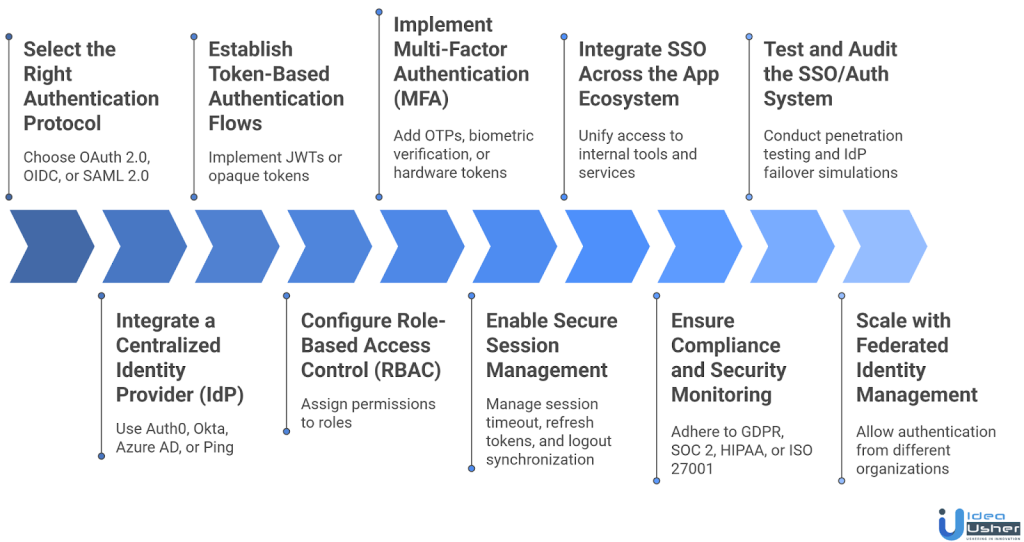
1. Select the Right Authentication Protocol
Enterprise identity management begins with choosing the correct protocol. Standards like OAuth 2.0 and OpenID Connect (OIDC) enable password-free access, while SAML 2.0 is often used in large organizations with identity providers. These standards ensure secure connections for users, apps, and third-party services, especially in multi-tool environments.
2. Integrate a Centralized Identity Provider (IdP)
Identity providers like Auth0, Okta, Azure AD, and Ping manage authentication and access, making it easier and safer. They support features like single sign-on, multi-factor authentication, and user provisioning, allowing developers to focus on app development.
3. Establish Token-Based Authentication Flows
Use JWTs or opaque tokens to verify user sessions across microservices. When a user logs in via the IdP, a token is issued for subsequent API calls, validating identity without repeated logins. This stateless model is ideal for API-first apps prioritizing real-time communication.
4. Configure Role-Based Access Control (RBAC)
Once users are authenticated, authorization controls access. Use RBAC to assign permissions to roles like admin, developer, or user, preventing privilege creep and ensuring users access only relevant features or APIs. This is crucial in secure, multi-tenant environments.
5. Implement Multi-Factor Authentication (MFA)
MFA adds an additional layer of protection beyond passwords through OTPs, biometric verification, or hardware tokens. It’s especially vital for enterprise-level access, safeguarding sensitive internal tools and data pipelines against unauthorized logins and credential theft.
6. Enable Secure Session Management
Proper session lifecycle management including session timeout, refresh tokens, and logout synchronization across apps, maintains trust and consistency in user experiences. For builders, implementing session invalidation on password reset or account revocation is crucial to prevent token misuse.
7. Integrate SSO Across the App Ecosystem
Enterprise SSO should unify access to all internal tools and connected services. Using secure APIs and connectors, v0-style builders can enable one-click sign-in across multiple products (e.g., analytics dashboards, internal CMS, admin panels), eliminating login friction while maintaining centralized control.
8. Ensure Compliance and Security Monitoring
Enterprise environments demand adherence to standards like GDPR, SOC 2, HIPAA, or ISO 27001. Integrate continuous monitoring and anomaly detection systems that track login activity, failed attempts, and token misuse. Real-time insights help detect threats early and maintain regulatory compliance, which is key for scaling securely in enterprise contexts.
9. Test and Audit the SSO/Auth System
Before deployment, conduct penetration testing, token replay tests, and IdP failover simulations to validate reliability. Periodic audits help identify misconfigurations or permission drifts, ensuring the system remains secure, stable, and compliant as your product evolves.
10. Scale with Federated Identity Management
As your app ecosystem expands, federated identity allows users from different organizations (partners, vendors, clients) to authenticate using their own IdPs without duplicating user data. This flexibility makes your SSO/Auth architecture future-proof and enterprise-ready from day one.
Cost to Build Enterprise SSO & Auth for v0-Style Builders
A robust enterprise auth development involves multiple technical stages that ensure scalability, compliance, and secure user access management. Below is a detailed cost breakdown to help understand the budget distribution across each phase.
| Development Phase | Estimated Cost | Description |
| 1. Authentication Protocol Setup | $7,000 – $16,000 | Choosing between OAuth 2.0, OpenID Connect, or SAML based on system needs and integration scope. |
| 2. Identity Provider Integration | $9,000 – $20,000 | Setting up and configuring IdP like Okta, Auth0, or Azure AD to handle centralized authentication. |
| 3. Token Flow Implementation | $8,000 – $12,000 | Implementing secure JWT or OAuth tokens for session handling, validation, and token lifecycle management. |
| 4. RBAC Configuration | $10,000 – $18,000 | Designing and integrating role-based access policies that control user permissions and data access levels. |
| 5. MFA Implementation | $8,000 – $15,000 | Integrating SMS, email, or app-based MFA to strengthen account security for high-privilege users. |
| 6. Secure Session Management | $12,000 – $20,000 | Managing secure user sessions, timeouts, and token refresh mechanisms to prevent unauthorized access. |
| 7. SSO Ecosystem Integration | $20,000 – $33,000 | Enabling seamless access across web, mobile, and internal tools using a unified authentication framework. |
| 8. Compliance & Security | $8,000 – $14,000 | Implementing audit trails, encryption standards, and compliance protocols like GDPR, SOC2, and HIPAA. |
| 9. Testing & Security Audit | $10,000 – $14,000 | Conducting penetration testing, vulnerability scans, and performance tests to ensure system reliability. |
| 10. Federated Identity Scaling | $10,000 – $17,000 | Expanding authentication across partner ecosystems and external applications using federated identity protocols. |
Total Estimated Cost: $70,000 – $135,000
Note: This estimated cost breakdown is based on typical enterprise SSO and authentication system needs. Final costs may vary with integration complexity, compliance, and scalability. Consult with IdeaUsher to receive an accurate estimate and discuss your platform’s goals and needs.
Tech Stack for Building Enterprise SSO & Auth
An enterprise auth development for v0-style builders requires a stack balancing security, interoperability, and scalability. Here’s a structured breakdown of the recommended tech stack by core function, with brief explanations for each tool or technology.
1. Authentication & Authorization Frameworks
These frameworks define how users log in, authenticate, and access resources securely.
- OAuth 2.0 / OpenID Connect (OIDC): Industry-standard protocols for authorization and authentication. OAuth handles access delegation, while OIDC adds an identity layer on top for seamless user sessions.
- SAML 2.0: A mature protocol widely used in enterprise environments for exchanging authentication data between Identity Providers (IdPs) and Service Providers (SPs).
- JWT (JSON Web Tokens): A compact and stateless method for securely transmitting claims between parties, ideal for validating sessions in distributed or microservice-based applications.
2. Identity Providers (IdPs)
IdPs manage user credentials, identity verification, and token issuance.
- Auth0 / Okta / Ping Identity / Azure AD: Leading enterprise IdPs that handle authentication, SSO, MFA, and user provisioning via secure APIs. They reduce infrastructure overhead and ensure compliance through built-in security certifications.
- Keycloak (Open Source): A self-hosted identity and access management solution supporting OAuth2, OIDC, and SAML with customizable login flows, federation, and user directory integration.
3. Frontend Authentication Libraries
Frontend tools simplify session handling and integrate authentication into the UI layer.
- NextAuth.js (for Next.js): Enables easy integration of OAuth, OIDC, and custom providers in modern web apps. Ideal for v0-style or React-based app architectures.
- Firebase Authentication: Provides pre-built UI components and SDKs for handling user authentication, passwordless logins, and identity linking, suitable for rapid prototyping.
4. Backend & API Security Layer
Ensures secure communication between client apps, APIs, and databases.
- Node.js with Express + Passport.js: Used to implement custom authentication flows and secure API routes. Passport.js offers strategies for OAuth2, SAML, and local auth.
- Spring Security (Java): A robust enterprise-grade security framework for authentication, authorization, and access control in Spring-based microservices.
5. Token & Session Management
Manages the creation, validation, and expiration of user sessions securely.
- Redis / Memcached: Used for session caching and token storage with minimal latency, ensuring smooth real-time authentication performance.
- JSON Web Key Sets (JWKS): A secure way to validate public keys used in JWTs, allowing automatic key rotation and verification between IdPs and services.
6. Multi-Factor Authentication (MFA) Tools
Add an extra layer of login security and compliance.
- Twilio Verify / Duo Security / Google Authenticator API: Used to send OTPs or push notifications for MFA, ensuring that even compromised credentials can’t bypass security layers.
- Authy or Microsoft Authenticator Integration: Enables time-based one-time passwords (TOTP) for frictionless, device-based verification across enterprise systems.
7. Database & User Directory
Store user metadata, roles, and audit trails securely.
- PostgreSQL / MongoDB: For storing user credentials, session tokens, and access logs. Encrypted at rest and integrated with your app’s backend security policies.
- LDAP / Active Directory (AD): Provides a centralized directory service for enterprise-level identity management and internal user control.
Challenges & How to Overcome Them?
An enterprise auth development for v0-style builders involves balancing speed, security, and compliance. Each challenge requires practical strategies to ensure secure, scalable, and user-friendly authentication for teams and applications.
1. Balancing Security and Speed
Challenge: v0-style builders prioritize fast prototyping, but insufficient security can expose enterprise systems to breaches, slowing adoption and trust. Maintaining both is difficult.
Solution: Our developers implement pre-built authentication SDKs and enforce programmatic security policies such as role-based access and default encryption. This approach maintains development speed while ensuring enterprise-grade security.
2. Managing Multiple Identity Providers
Challenge: Enterprises often require integration with Google Workspace, Azure AD, or custom SAML setups, making manual management error-prone and complex.
Solution: We leverage a unified identity broker supporting OIDC, SAML, and SCIM protocols. Our team centralizes identity management, streamlines onboarding, and simplifies integration of enterprise SSO & auth across multiple providers.
3. Scalability and Performance
Challenge: High volumes of authentication requests can cause latency spikes, token verification delays, or timeouts in multi-tenant environments.
Solution: Our developers implement token caching, distributed session stores, and load balancers. We also configure CDN-level caching to ensure enterprise SSO & auth systems remain fast and reliable under high load.
4. Maintaining Compliance
Challenge: Ensuring privacy, auditability, and regulatory compliance across all authentication workflows adds operational complexity for enterprises.
Solution: We integrate IAM systems with built-in audit trails, encryption at rest, and role-based permissions. Our team conducts regular audits and implements compliance-friendly integrations to maintain enterprise SSO & auth regulation readiness.
5. Debugging and Observability
Challenge: Identifying the source of authentication failures, provider, app, or user settings, is difficult without structured monitoring.
Solution: Our team integrates structured logging and tracing using tools like Datadog or OpenTelemetry. We monitor every stage of the login process to quickly detect and resolve issues in enterprise SSO & auth systems.
Conclusion
Building a secure and scalable enterprise SSO & auth system is more than a technical upgrade; it’s a strategic move that strengthens access control, compliance, and user trust. By aligning authentication with enterprise workflows, businesses can simplify management, reduce vulnerabilities, and enhance productivity. As v0-style builders continue to redefine how teams create and scale applications, investing in robust authentication infrastructure ensures that innovation never comes at the cost of security. The right approach enables organizations to balance usability, protection, and long-term scalability.
Why Choose IdeaUsher for Your Enterprise SSO & Auth Development?
At IdeaUsher, we specialize in building secure and scalable enterprise-grade SSO and authentication solutions tailored for v0-style platforms. Our expertise ensures robust security, seamless integration, and compliance with industry standards.
Why Work with Us?
- Custom Enterprise Solutions: We deliver authentication systems designed to fit your platform’s unique architecture and scale with your growth
- Proven Expertise: With multiple enterprise-grade implementations, we help organizations streamline access control while enhancing security.
- Seamless User Experience: Our solutions provide smooth and intuitive authentication flows for end-users without compromising security.
- Regulatory Compliance: We ensure your SSO and auth systems meet industry-specific standards and legal requirements for enterprise operations.
Explore our portfolio to see how we help businesses implement SSO solutions efficiently.
Reach out today for a consultation to secure your platform’s future.
Work with Ex-MAANG developers to build next-gen apps schedule your consultation now
FAQs
Enterprise SSO & auth allows users to access multiple applications with one secure login. It improves user experience, enhances security, and simplifies IT management, making it essential for scalable enterprise software systems.
Key components include identity providers, authentication protocols like OAuth or SAML, access tokens, and secure APIs. Together, they ensure seamless, unified access management across multiple enterprise tools and environments.
SSO integration strengthens security by centralizing authentication, reducing password fatigue, and preventing unauthorized access. It enables builders to maintain compliance while providing developers and clients with safe, frictionless access to enterprise systems.
Common challenges include protocol compatibility issues, misconfigured identity providers, and integration errors with legacy systems. A strong architectural plan and continuous monitoring are crucial to ensuring smooth authentication flows and data protection.
